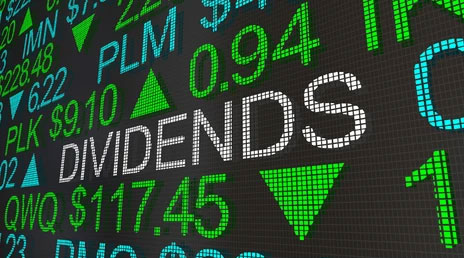What is a Dividend?
Have you ever wondered what is a dividend? A dividend is the portion of retained earnings and profits that a company distributes to shareholders. When a business earns profits and collects earning a surplus, these earnings can be reinvested into the company or distributed to stakeholders as dividends. The dividend price ratio is paid per share multiplied by the share cost. The company typically mails cheques to stakeholders in about a week. Stocks are typically purchased or sold in dividends up to two business days before the reference date, and then they are declared ex-dividend.
How Does a Dividend Work?
The amount of dividends is decided on profitability per unit. It will be distributed in equal amounts to shareholders in that same category. The dividend is subject to approval by the Board of Directors. If a dividend is declared, it'll be reimbursed on a particular date, referred to as the payment date. The following are the steps to follow for the process:
- The company makes profits as well as keeps its earnings.
- The regulating team determines that surplus gains should be distributed to shareholders instead of being retained.
- The board accepts the proposed dividend.
- The business declares its dividend.
- A dividend will be paid out to stakeholders.
How Do Stock Dividends Work?
Dividends are paid for each share of stock. For example, if the shares you hold are worth 40 of an organization and that business reimburses $4 per year in dividends in cash, you'll get $160 annually.

Types of Dividends
In general, dividends are distributed on the common stock of a company. There are a variety of dividends that a business could choose to pay to shareholders.
Cash Dividends
The most popular kind of dividend is the cash dividend. The majority of companies pay dividends directly in cash to the shareholder's brokerage account.
Stock Dividends
Instead of cash payments, businesses can also pay capitalists by transferring a share of their stock.
Dividend Reinvestment Programs
Participants in dividend reinvestment plans can fund and retain any dividends they receive in the company's stock, usually at a reduced price.
Special Dividend
The dividends are paid out on all the interest of the business's common stock but aren't as standard dividends. The company may issue special dividends to pay out gains that have built up over time and for which there is no immediate need.
Preferred Dividends
The payouts are made to the holders who own preferred stocks. Preferred stock is a reserve that operates differently from a fund and is more like an obligation. Dividends are generally paid every quarter. However, unlike dividends paid on common stocks, dividends on preferred stocks are typically fixed.
Stable Dividend Policy
A stable dividend policy is the most commonly used and is convenient to regulate. The goal is to provide an annual and expected dividend in the long run, regardless of the volatility in earnings. The amount of dividend increases or decreases is determined by the growth rate of the business and not based on quarter-to-quarter fluctuations in earnings. This type of strategy gives stockholders reliance on the number and timing of dividends.
Constant Dividend Policy
Through a consistent dividend policy, the business will pay out a specific amount of its earnings per period. If earnings are rising, investors will receive a bigger dividend. If earnings are falling, investors will receive a lesser dividend, or there may be no dividend. The biggest drawback to this kind of strategy is the potential volatility of the dividend. This could make it hard for investors to manage liquidity.
How are Dividend Stocks Taxed?

The taxation of stocks' dividends is contingent on the kind of account you keep them in. If you own the dividend-paying fund or stocks in a joint or individual account, you'll have to pay taxes on dividends that you earn along with any gains that are realized. Dividends are generally taxed at the same rate as regular income, whereas capital gains are taxed at a higher rate, contingent on the time you've owned the asset as well as your income.
Conclusion
Dividends have the potential to have a huge influence on your investment portfolio in the long run. They could help you earn income in retirement, or even earlier, and could be reinvested to boost the total return on investment. Think about owning dividend-yielding businesses via low-cost funds or ETF in a tax-benefitted bank account as an interesting part of your investment program.

What Is the Definition of a Debit Balance?

An Eccentric Guide to Learn What is a Billing Address?

Are There Tax-Exempt Mutual Funds Available?

The Best Online Auction Sites

What Is Value-Based Pricing and How Does It Work?

What Is A Bid Bond and Why It Is Required

How Can One Avoid Losing Money in Forex Via The Trading Of Currencies?

What Exactly Is the Function of Cloud Storage?

All You Need to Know About What is a Dividend?

What Prevents Bitcoins From Being Double-Spent?

A Guide to Learn About Low-Cost Ways to Transfer Money
